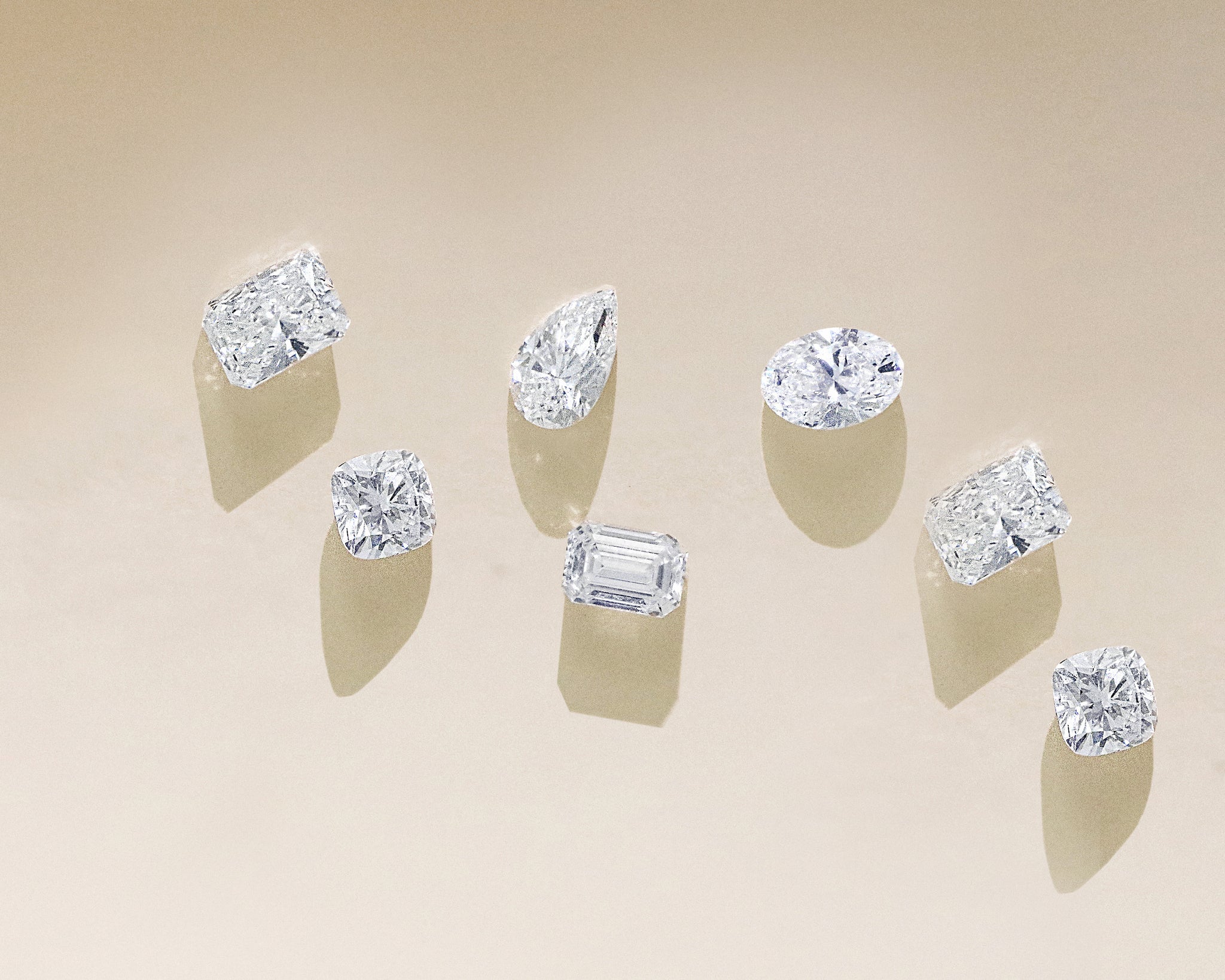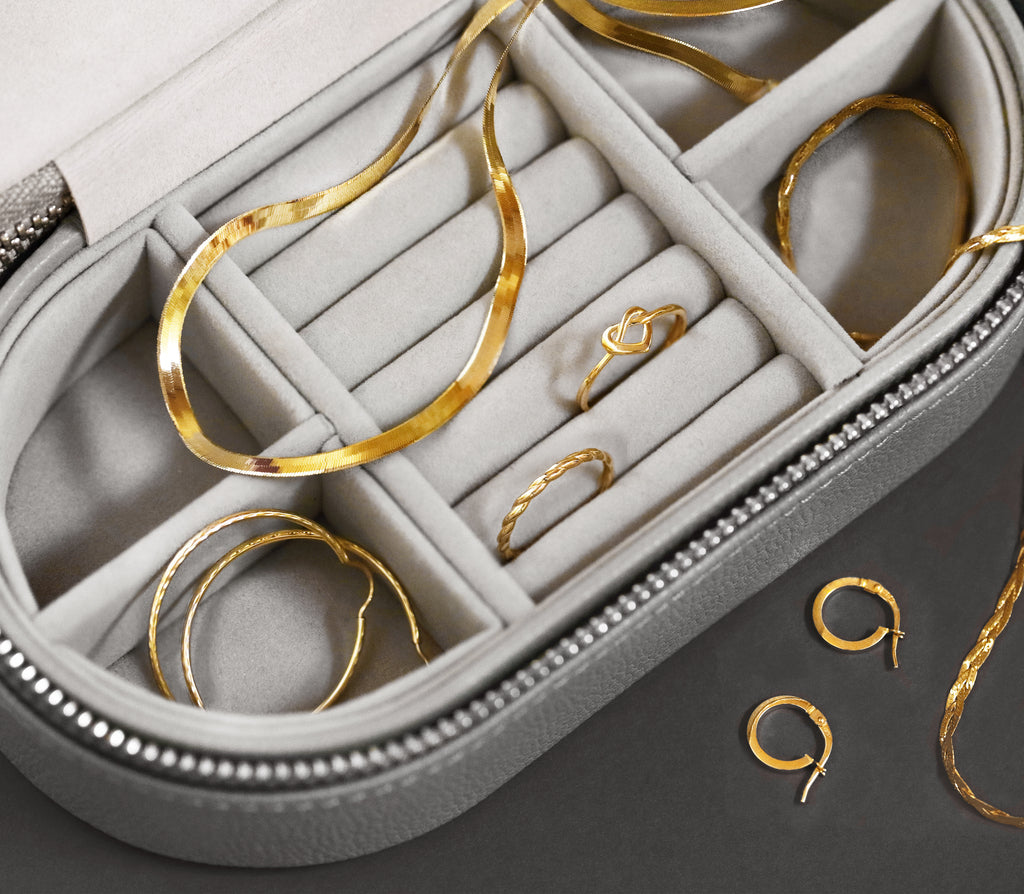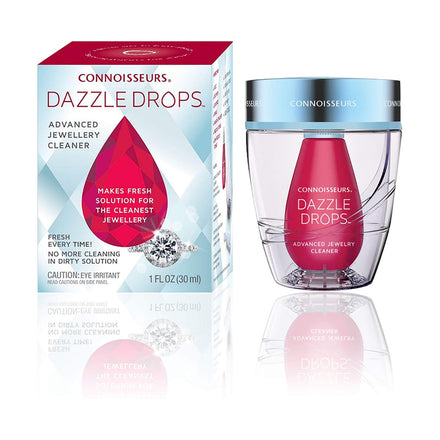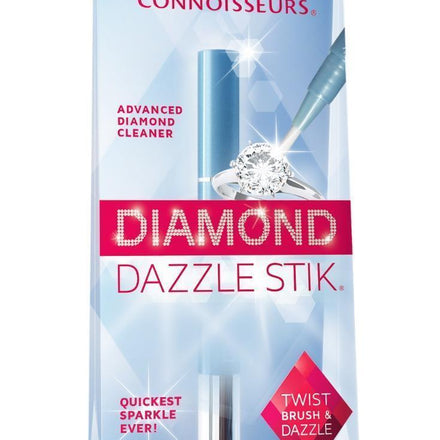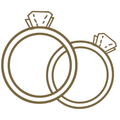When it comes to buying that all-important piece of diamond jewellery - whether it’s an engagement ring to get down on one knee with or a special gift for a birthday or anniversary - it’s important you understand what affects how a diamond looks and what you need to check for. It ensures you walk away with a stunning diamond that not only suits your budget but that offers the best value for money.
Browns' diamond buying guide should offer everything you need to know, including important things such as a roundup of the different diamond cuts and what to look for when it comes to diamond colour and clarity - as well as the many diamond shapes available and to help you find the best choice for you.
Before we begin: Some words to remember
Inclusions -
These are natural occurring flaws within a diamond.
Brilliance -
This word means the colourless light that creates sparkle in a diamond and how much you enjoy is determined by the cut of the diamond and how much light is reflected back in the stone.
Fire -
This is the coloured light that reflects back and what most people associate with the sparkle of a diamond.
The Four Cs
If you haven’t heard of the four Cs, they’re essentially a four-step guide to diamond buying that you can refer back to, to check that the stone you are looking to purchase is definitely a good one. They consist of:
Cut
This means the way a diamond is cut from its raw, rough stone to reflect light. The word cut can also often be used to refer to the shape of the diamond for example “a radiant cut diamond”
Clarity
Clarity refers to the natural inclusions that can be found within a diamond, during the intense pressure in which a diamond is formed bubbles or pieces of carbon can get trapped causing these inclusions – a unique finger print. The inclusions can be black or grey in colour and can vary in size. The clarity grading allows you to decide how included you would like the stone to be, the higher up the scale the less likely you are to see the inclusions with your naked eye.
At Browns we use a minimum of SI1, this means that you would need a 10 x microscope in order to see the inclusion. Remember –the larger the stone the more likely you are to see an inclusion.
Colour
Colour actually refers to the colourless of the diamond, with clear stones preferred over ones that look more yellow or even brown. Picture the alphabet, starting with D for diamond and going all the way to Z. The closer to Z you get the more brown/yellow tone the diamond will be. The closer to D colour the more colourless the diamond.
At Browns we opt for a G/H minimum in our natural stones to insure that our diamonds are bright and clear. Our Lab grown diamonds host a DEF colour.
Carat
The most well known of the 4C’s the carat of the diamond refers to the actual weight of the diamond and is the first thing people look for.
Diamond Colour Guide
Colour grading actually means how colourless the diamond is - the less colour the better. Diamonds come in a range of shades, from yellows and browns to crystal clear. You’ll be looking for a stone that is as close to colourless as possible.
K-Z
Usually yellow or even brown, you can clearly see the colour of the diamond.
J
These diamonds have a slight tint of colour.
I
These diamonds offer incredible value for money, the colour is not easy to notice and the diamond is still stunning to look at.
H - G
You will find it hard to detect any colour in this diamond, making it a popular choice for many engagement rings for those with a smaller budget.
F
One of the best diamonds you can purchase, there will only be minute traces of colour that only an expert could detect.
E
These diamonds are very rare and the colour is very hard to trace. The diamond appears to be colourless.
D
This grade is extremely rare and is the highest colour grade you can find in diamonds.
At Brown Family Jewellers, we only offer diamonds between the grades of D – P so you can make your selection knowing that you’ll only be receiving the very best quality for your budget.
The best diamonds to buy are graded between D-F but for good value and a good looking diamond you can opt for G-J grades.
Things To Consider:
- The bigger the diamond, the easier it will be to see the colour.
- Different shapes can have an effect on how they show colour. Round and princess are better for concealing a coloured diamond, while a shape like an asscher will show up a diamond with a low colour grade. Bear this in mind if you are working with a smaller budget and are considering diamonds that have a little more colour.
- Different gold colours can have an effect on how the diamond appears. Yellow gold is the best choice, for example, if you are choosing a more coloured diamond as it will make the stone’s colour harder to detect.
- If the diamond is colourless, a white gold or platinum setting may be the better choice - as yellow gold could show through and distort the colour.
Why Does Diamond Grading Stop At The Letter D?
The diamond colour grades were created in the 1950s, to regulate diamond grading. D was chosen to be the last letter just in case another diamond was found in the future that was even better! You never know…
Which Grade Should I Buy?
Our team is on hand to help find the perfect diamond for you. Whichever diamond you choose is personal preference.
Diamond Clarity Guide
Clarity is the term used to determine if a diamond has inclusions (imperfections) inside or on its surface. These are completely natural and make every diamond unique but many people prefer a stone that is as free of these as possible, to ensure the largest amount of sparkle.
This is why the amount of inclusions can determine a diamond’s worth - the more imperfections there are, the less likely it will be valued highly. Black diamonds are essentially normal diamonds with lots of flaws, enough to change the diamond’s colour to a black shade.
Flaws show up as white, grey or even black marks in the diamond and to determine the clarity grade of the stone, experts take the following things into consideration:
The size of the inclusions
The amount inside the diamond
The colour of the inclusions
Their position within the diamond
The below grading will help you determined which clarity is right for you.
FL-IF
A flawless diamond, stones with these grades have no visible inclusions when magnified x10.
VVS1-VVS2
This diamond will feature a very small inclusion, which can only be found when it is magnified.
VS1-VS2
These are one of the most popular choices for diamonds, as they only feature very small inclusions and appear clean to the eye. This does depend on the shape of the diamond though, again asscher cuts can highlight inclusions in a VS2 diamond, like they can with its colour.
SI1-SI2
An SI1 diamond is a great choice as you are unlikely to see an inclusion with the naked eye. At Browns we opt for SI+ for all of our crafted to order diamonds to ensure the best quality in clarity.
I1
The inclusions in these diamonds are easy to see but you can get a much larger diamond for a lower price because of this. It all depends on personal preference.
Which Grade Should I Buy?
If you want a near perfect diamond, without inclusions that are visible to the naked eye we recommend looking at SI+. However it is personal preference.
Diamond Cut Guide
The term cut can be used to mean the shape of the diamond however in this context we are talking about the cutting grading of the stone. This means how close to perfect has the stone been cut.
Diamonds are graded differently depending on how they are cut. The aim is to get a diamond to reflect as much light as possible, to ensure it sparkles.
These are the different diamond cuts and gradings you will see here on the Brown Family Jewellers website and what they mean:
Shallow
The diamond is not deep enough to reflect light back, and so the light will travel straight through the stone and out of the bottom.
Ideal
The light will enter the diamond and then reflect back, ensuring brilliant sparkle.
Deep
This cut will see the light enter but not quite make its way back to reflect up.
Diamond Cut Grades
When it comes to actually choosing your diamond, you will have the following cut grades to choose from. Here’s what they each mean:
Ideal
This is a rare cut, but if available, reflects all of the light that enters the diamond.
Very Good
This diamond offers the same type of light reflection as an ideal but at a lower price.
Good
Most of the light that enters the diamond is reflected, it’s a more affordable option but you still enjoy plenty of sparkle.
Fair
A small portion of light is reflected but it is still a good quality diamond.
Poor
This diamond is likely too shallow or too deep and so very little light is reflected back. It will be a much lower price though, so for those who want a diamond but aren’t too worried about how much it catches the light it might be a good choice.
Diamond Carat Guide
Being the most well known of the 4 C’s, carat isn’t always the first thing to look for. As we’ve already discovered, colour and clarity make a huge difference to a diamond’s appearance, while the cut determines how much it sparkles in the light.
Carat measures the diamond’s weight NOT its overall size - this is something to bear in mind. One carat = 0.2 grams.
The shape of the diamond can make a difference to the size of the diamond in regards to its carat. For example, a round 0.25 carat diamond will be 4mm wide in size, while an emerald shape will be 3.2mm.
Here we take a look at how the carat determines how a diamond looks when worn.
Diamond Shape Guide
Diamonds can be found in a variety of shapes and each one has a rich history behind its creation. These diamond shapes can be transferred into a variety of jewellery pieces, including engagement rings, necklace pendants and earrings to create beautiful jewellery that you can love forever more.
Round
This is one of the most popular choices for a diamond, it offers a timeless look that anyone can carry off and matches all styles and tastes.
Princess
This is a square cut diamond that offers brilliant sparkle. Its inverted pyramid shape means that it lets lots of light enter and reflect back.
Marquise
This long shape is perfect for making hands appear slender and longer in length, it is an oval shape with pointed, tapered ends. This shape originated in France and is also known as a navette (which translates to ‘little boat’).
Oval
Offering something a little extra than a typical round shape, the oval is elegant and perfect for those looking for a simple diamond. The modern oval we see now was introduced in the 1960s by a leading Russian diamond cutter.
Pear
This elegant shape is ideal for elongating fingers, making them appear slender. The pear diamond has been around for a long time, since the 1400s in fact and the creation of this diamond was what actually lead to them being used in jewellery.
Emerald
This shape has been in use since as long ago as 500 years and was particularly popular in 1920s jewellery - making it the perfect choice for those who like vintage styles. The emerald shape was actually created specifically for emerald gemstones, to ensure that they did not chip during the cutting process and later diamond cutters realised it worked well for them too.
Heart
Evoking a true symbol of romance and love, a heart shaped diamond is perfect for engagement rings but also in necklace pendants. The shape has been recorded as early as the 1600s and continues to prove popular even now. Essentially a pear shaped diamond with a cleft, it’s a cut that offers amazing brilliance.
Ascher
The Ascher shape has royal history, as it was commissioned by King Edward VII to be cut for the famous English crown jewels. The shape was also popular in the 1920s, art deco movement but lost popularity soon after that and could only be found in vintage jewellery. Now it’s proving popular again and we sell a stunning range in our jewellery here on the Browns website.
Radiant
Radiant diamond shapes are rectangular and offer stunning brilliance. Their longer length ensures hands look slender but their simple design ensures plenty of light return and sparkle.
A square shape diamond with rounded edges, cushion shapes are named this because they remind you of the shape of a pillow. They’ve been around since the 19th century and continually prove to be one of the most popular diamond shapes for all jewellery types.
Diamond Certification
All made-to-order diamond jewellery purchased from the Browns website is certified by the GIA (Gemmological Institute of America) or IGR (International Gemmological Research Laboratories) which proves that they have been examined and the grading and certification applied to them is correct.
Once you have received your diamond’s certification keep this in a safe place, in case your diamond is lost in the future and you must make an insurance claim or if you want to resell it. This ensures you can ask for and receive the right price.
The diamond you choose for that piece of jewellery should reflect the style and personal taste of you or the person you are buying for. Be sure to refer back to this guide when debating over carats and cuts. Our team are also on hand to help and you can buy confident in the knowledge that every piece of jewellery available has been selected by an expert to ensure high quality and exceptional value for money.



